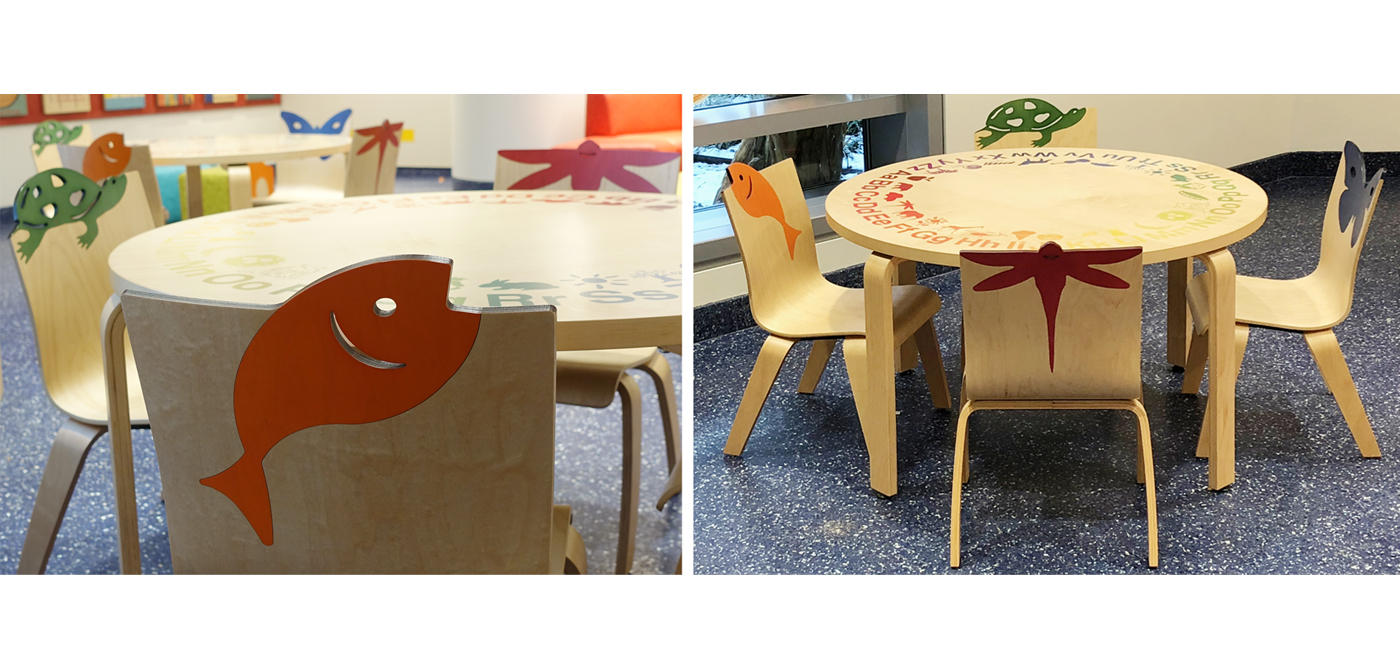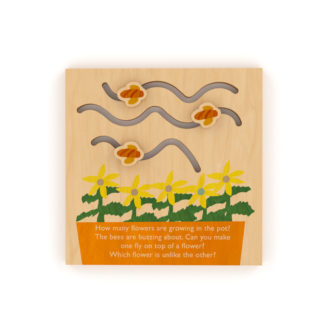
Children’s Hospital of Michigan
Detroit, MI
Architect: Shepley Bullfinch | Interiors by Detroit Medical Center Interior Design
Biophilic design principles — Land, sea, air in the main lobby at the Children’s Hospital of Michigan. As in nature, the space allows children to explore and create their own PLAY as they await treatment or seeing family members. Healthcare environments can be a stressful place for children, even in the best of situations. Detroit Medical Center designers and architectural staff drew inspiration from the healing properties of nature, and called on TMC to assist in not just creating a warm and inviting space for children, but one that also promotes curiousity and learning.
Biophilic design in this space relies heavily on the tactile experience to comfort and heal. Warm, heavy wood brightens the atmosphere and nature-inspired perimeter cut-outs of fish, turtles, and dragonflies strengthen the human-nature connection. Biophilic design promotes happiness and mental well-being that encourages natural creativity, and enhances and hastens the healing process, making it the ideal inspiration for a children’s healthcare environment.

Entering the main lobby area, children visiting the hospital are greeted by the far-off vision of Butterfly Appliques soaring overhead, and their predecessor, the Zetty Caterpillar, crawling across the floor in stool form. The Whistler Ottoman’s leaf divider further changes the scale of children’s perspectives, encouraging interaction with the surroundings. The Whiteboard Table facilitates creative expression, and the Alphabet Table provides a collaborative space for peers or parent-child learning. All of this lends to the core tenants of TMC Furniture’s and the hospital’s goal for the space, early literacy and PLAY.

By inviting make-believe, encouraging storytelling, and asking open-ended questions, TMC’s LearnPLAY brand promotes lateral thinking, creativity, and problem solving. The Learning Panels along the wall channel children’s focus by asking them to count, compare, and create; all of which are important positive habits to facilitate lifelong learning. They’ll go from counting the rings of a tree to learning their significance and differences, to measuring the elements of a garden, to learning the tenants of camouflage and extrapolating how that will affect an animal’s appearance. All of this prompting is to encourage curiosity and learning.










